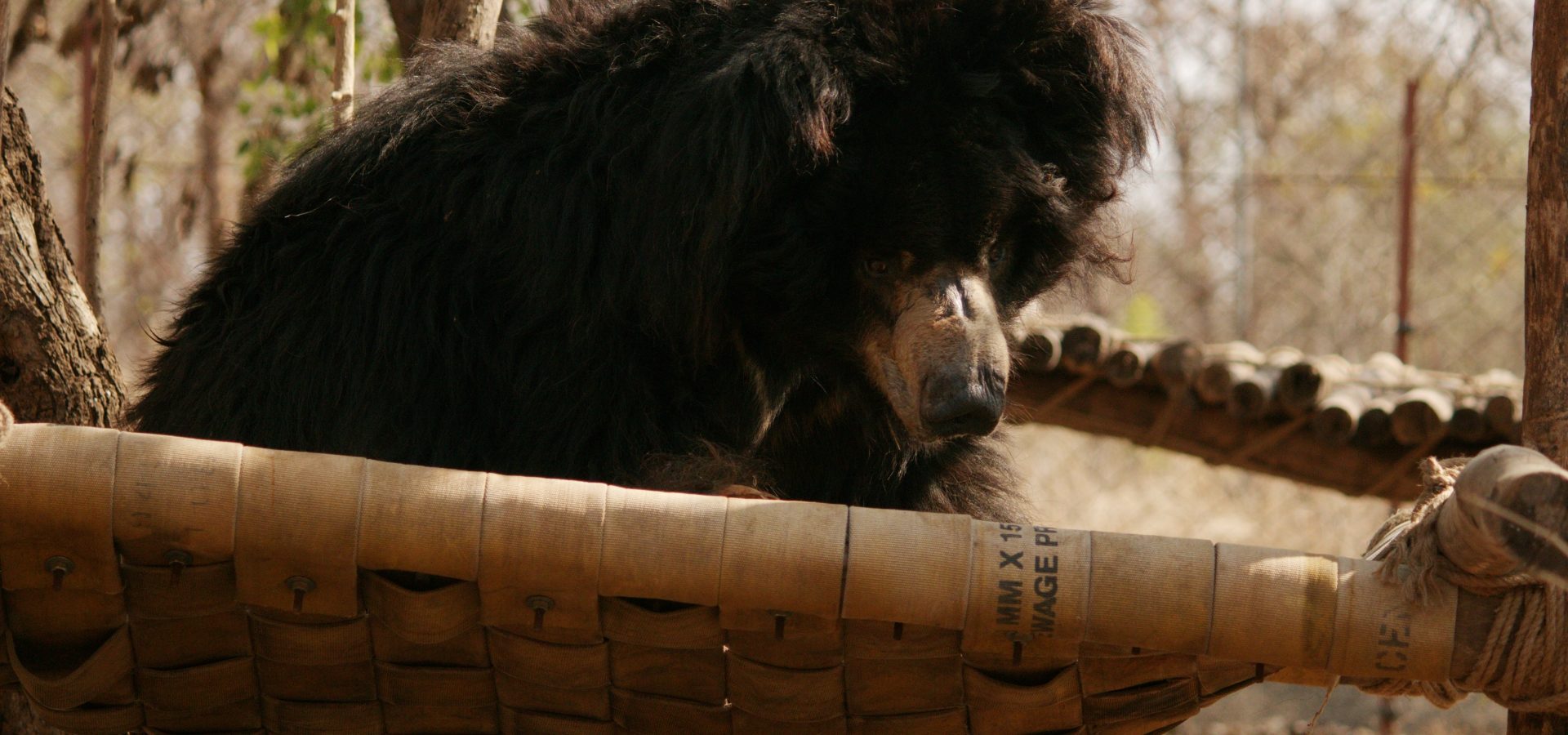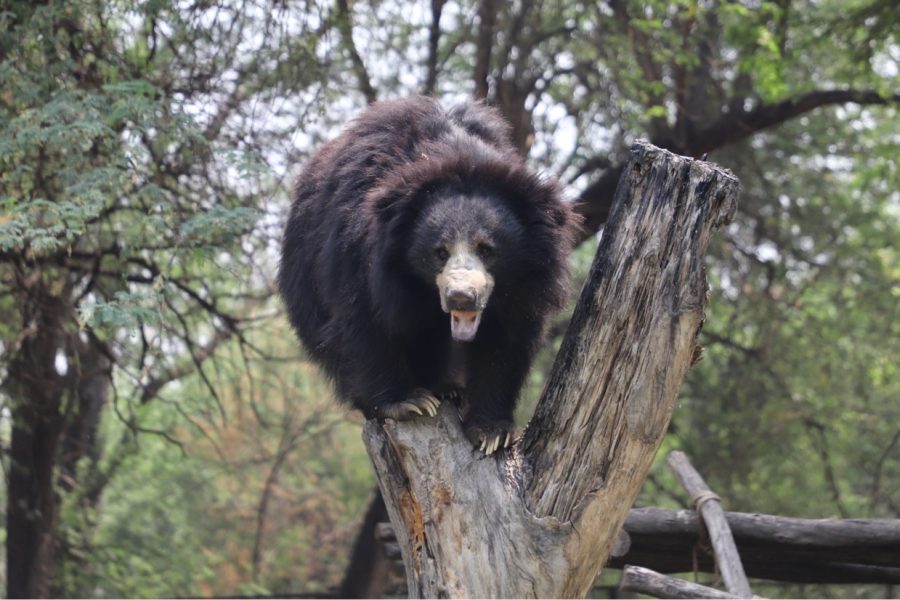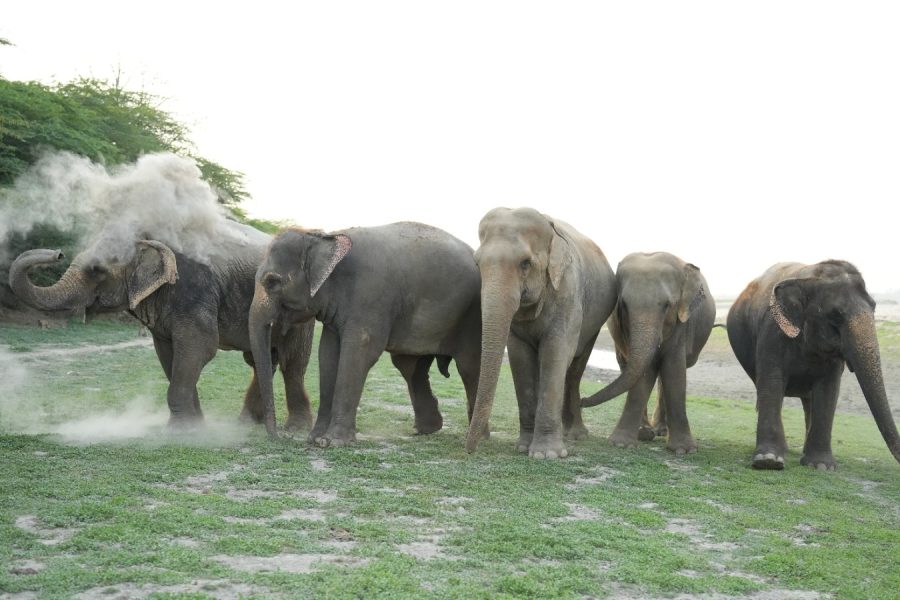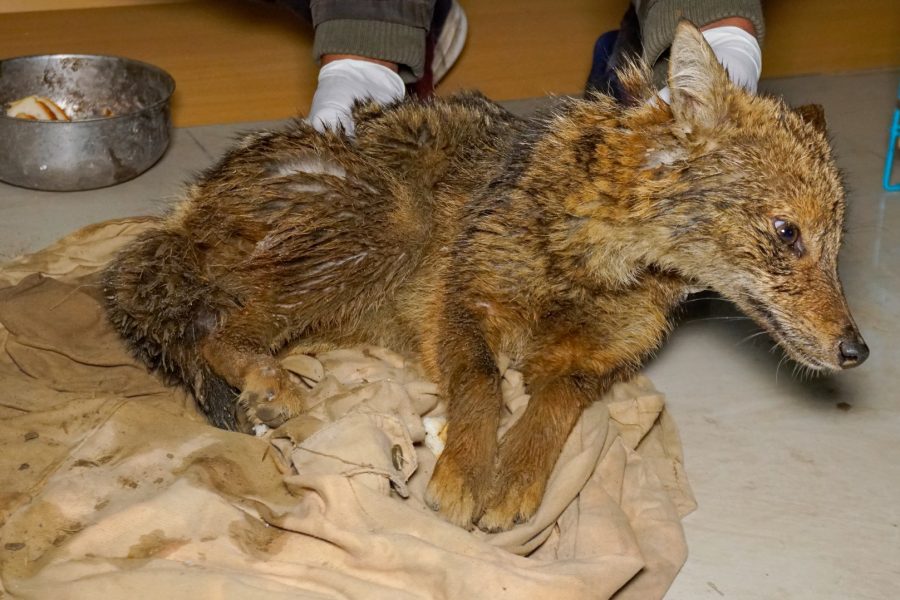Babloo was the oldest living rescued sloth bear in the country. He stood tall as an embodiment of perseverance, and showed what fighting old age means. This male sloth bear was a resident of the Van Vihar Bear Bear Rescue Facility (VVBRF) in Madhya Pradesh, managed jointly by Wildlife SOS and the Van Vihar National Park.
On a cold winter morning of January 2024, the news dawned upon the bear care staff that the oldest resident of VVBRF was not amidst them anymore. At 36, with age catching up, multi-organ failure got the better of Babloo. Doctors had noted his appetite decreasing since the end of December 2023. However, this was not a sudden development; Babloo had begun displaying signs of illness in September 2022.
The elderly ursine had suddenly stopped eating, and refused to enter his resting den. It was a critical scenario where the shocked care staff had anticipated Babloo’s demise due to the grave nature of the situation. But this compelled our caregiver and veterinarians to help him with even more conviction. They were able to coax Babloo back into his den, and prepared a mouthful of broth for him to awaken his hunger. The broth did its magic, and Babloo had resumed eating again.
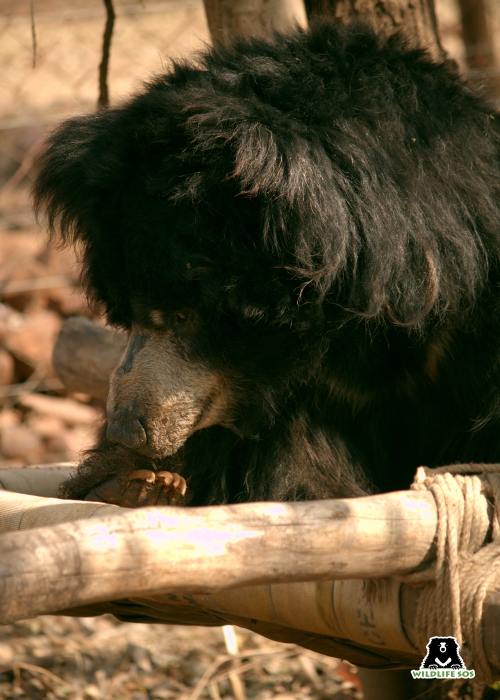
But during the recent streak of appetite loss, Babloo had stopped consuming food and become extremely weak. Even though the veterinarians tried their best to revive Babloo’s appetite by injecting liver stimulants, his deteriorating health was the signal of a foregone conclusion.
It was back in May 2006 when 19-year-old Babloo was rescued from the clutches of street performance as a ‘dancing’ bear. He was used for commercial benefits by a community known as the Kalandars in Rajasthan. Since then, VVBRF has remained Babloo’s home. From the moment Babloo stepped in, Phoolchand has been his caregiver, and their companionship ran a course of 17 years. From his account, we got to know that much like adult sloth bears in the wild, Babloo preferred to stay solitary.
It is extremely crucial to understand that sloth bears survive roughly till the age of 15 years in the wild. Under rehabilitative care, their age can range between 25 and 30 years. As they surpass 30, their movements and behaviour change drastically due to senility, and their energy levels for activities reduce by a huge proportion. In Babloo’s case, based on the accounts of our bear care staff, he remained active even after 30, and made full use of the field in his enclosure.
Rescued bears always need enrichments in some form to keep them physically stimulated, and when it comes to geriatric bears, the arrangements are made differently. Babloo had a hammock and massive tyres as part of his enrichments. Because of his fondness for the hammock, the caregiver prepared it carefully, placing it closer to the ground. This way, Babloo could be seen lazing on the hammock for almost the entire day.
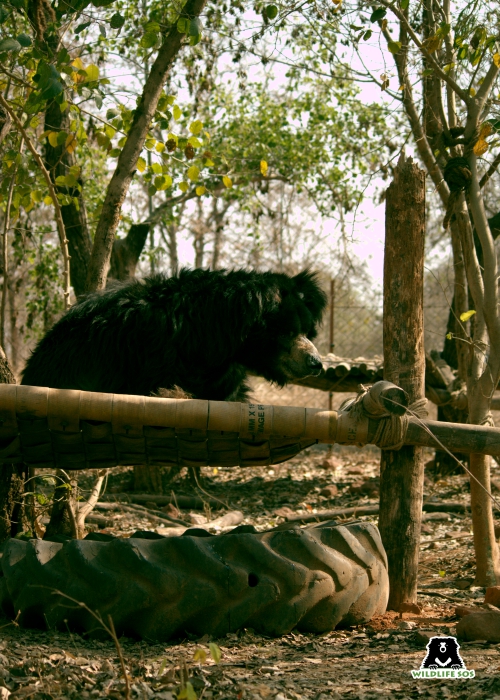
As part of geriatric care, the veterinarians administered vitamin and calcium supplements for his joints, omega-3, liver supplementation and immunobosters. Additionally, the inclusion of broth in his diet would begin during the rainy season and go on till winter. During the summer, our bears are usually given delicious ice popsicles made of fruits. But Babloo preferred his fruit to be as natural as they always were. He had a special liking for watermelons, and mangoes too. A certain idiosyncrasy set this elderly bear apart: even at an advanced age, the fragrance of fresh mangoes would draw Babloo from a distance in an excitement similar to that of a little child!
His caregiver Phoolchand recalls how Babloo used to dig massive pits in his field, which were then filled with water in the morning. As they cooled down and turned damp by evening time, Babloo would enter and sit within the pits at leisure.
Until the very last moments, so strong was the tie between Phoolchand and Babloo, that it was he who could ultimately convince Babloo to receive his prescribed medicated injection. Babloo would not let anyone near him, with the exception of Phoolchand. The caregiver would even go to the extent of making multiple trips to the kitchen to ensure Babloo ate something from the lot he would bring back. Despite Babloo’s inappetence, the team kept an assortment of fresh food for him till the last day.
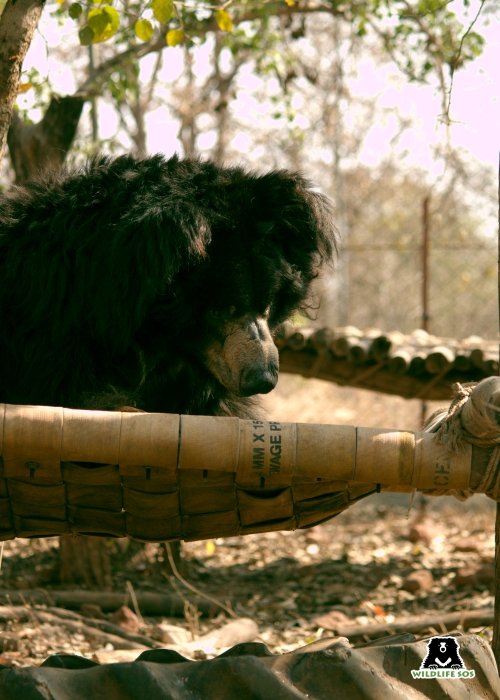
But on that January morning, there was a semblance of despair, and the period of mourning was followed by a sense of acceptance. We realised that after showering him with so much love and care, it was time to finally part ways with our oldest resident bear. The feeling of grief was amalgamated with a feeling of fulfilment: we had the opportunity to devote time towards the healing of a bear that had suffered for almost two decades of his life. And time was the greatest and most valuable gift that we could give to Babloo.

